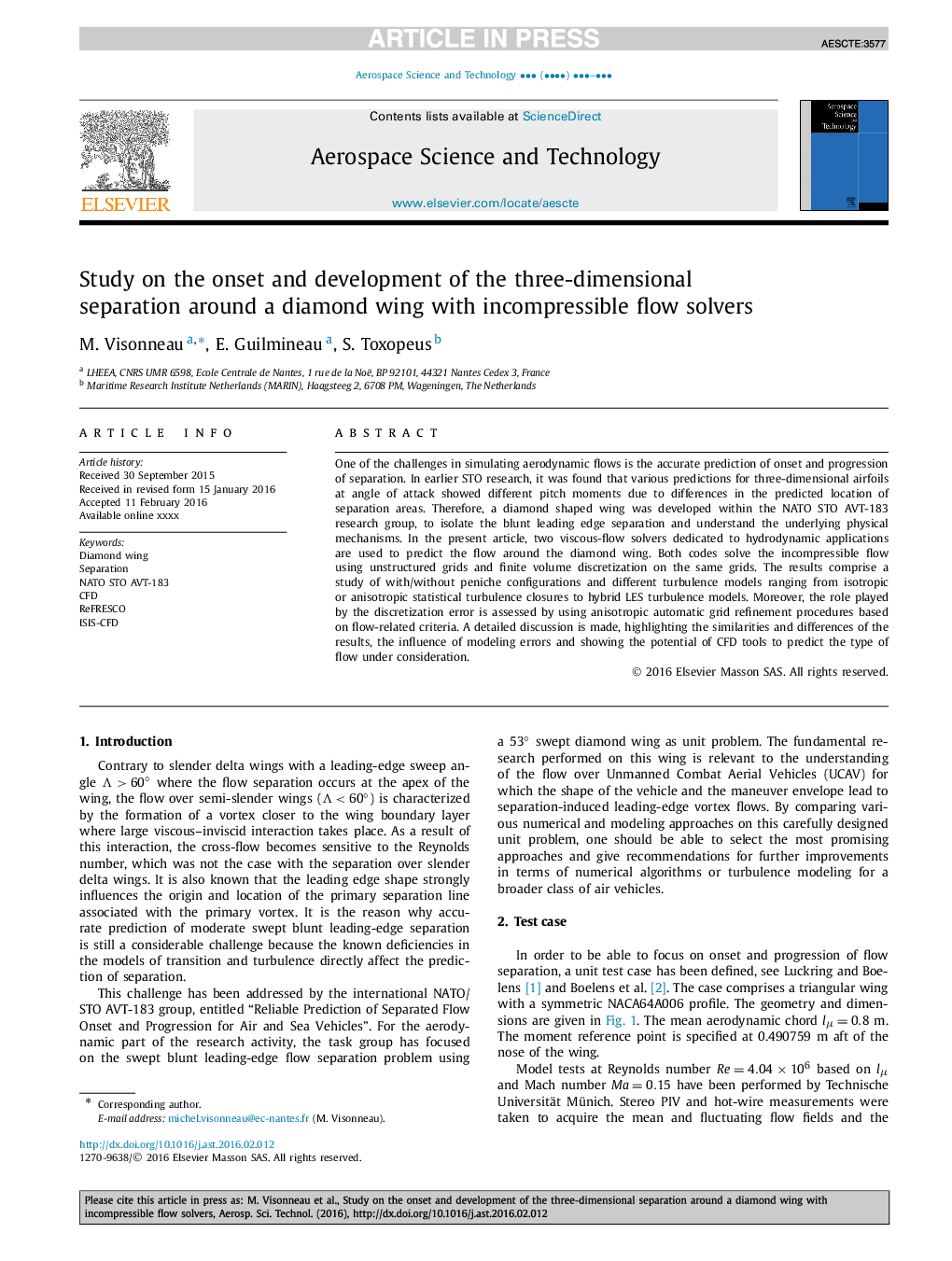| Article ID | Journal | Published Year | Pages | File Type |
|---|---|---|---|---|
| 5473066 | Aerospace Science and Technology | 2016 | 24 Pages |
Abstract
One of the challenges in simulating aerodynamic flows is the accurate prediction of onset and progression of separation. In earlier STO research, it was found that various predictions for three-dimensional airfoils at angle of attack showed different pitch moments due to differences in the predicted location of separation areas. Therefore, a diamond shaped wing was developed within the NATO STO AVT-183 research group, to isolate the blunt leading edge separation and understand the underlying physical mechanisms. In the present article, two viscous-flow solvers dedicated to hydrodynamic applications are used to predict the flow around the diamond wing. Both codes solve the incompressible flow using unstructured grids and finite volume discretization on the same grids. The results comprise a study of with/without peniche configurations and different turbulence models ranging from isotropic or anisotropic statistical turbulence closures to hybrid LES turbulence models. Moreover, the role played by the discretization error is assessed by using anisotropic automatic grid refinement procedures based on flow-related criteria. A detailed discussion is made, highlighting the similarities and differences of the results, the influence of modeling errors and showing the potential of CFD tools to predict the type of flow under consideration.
Keywords
Related Topics
Physical Sciences and Engineering
Engineering
Aerospace Engineering
Authors
M. Visonneau, E. Guilmineau, S. Toxopeus,
